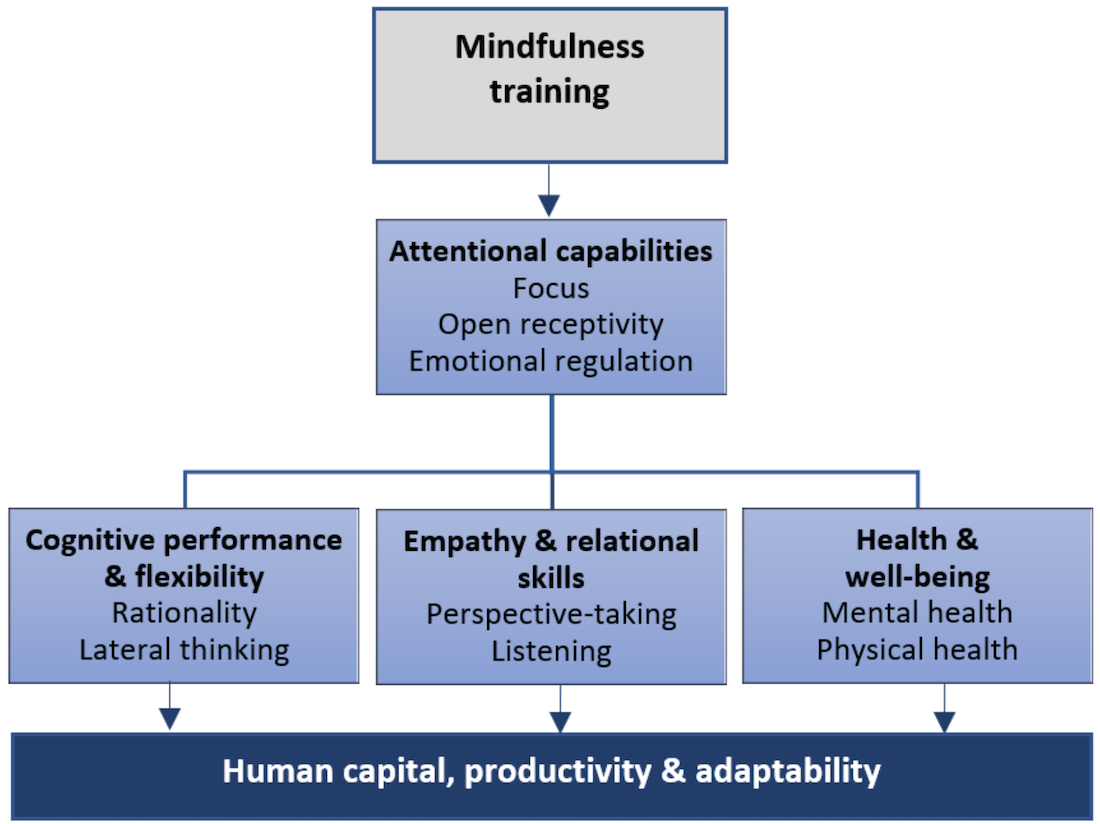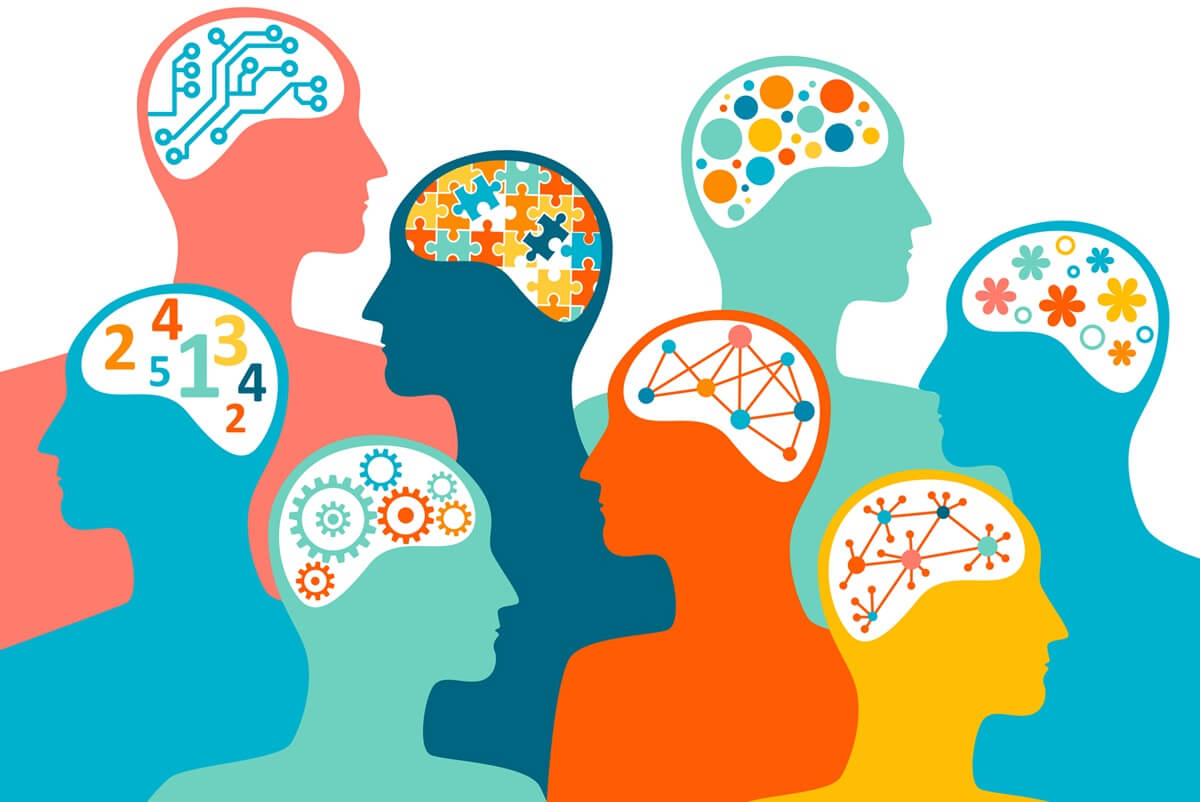The attentional, cognitive and social capabilities that mindfulness training can help individuals cultivate could be especially valuable in the context of the coming decades of disruption. Klaus Schwab, Head of the World Economic Forum, refers to the impending wave of technological change as the ‘Fourth Industrial Revolution’, driven by the exponential rate of development in technologies such as artificial intelligence, machine learning, general-purpose robotics and biotechnology. These technologies look set to revolutionize almost every industry over the coming decades.8
In this context, mindfulness could, perhaps, come to be seen as the core 21st-century capacity such that ‘in years to come we’ll be talking about mindfulness as we talk about exercise now’, in the words of Sally Boyle, head of human capital management at Goldman Sachs.32 Why so?
- First, in a radically changing environment, mindfulness training affords individuals greater adaptability by enabling individuals to recognize habitual patterns of thinking and behavior and the space to consider more possibilities for action, in part due to the cultivation of ‘meta-cognition’ (see box below). This potential for greater adaptability is reflected in the findings, cited above, around divergent thinking and lateral thinking. It is also supported by neurological studies that reveal structural and functional changes in the brain resulting from mindfulness training. (This, in turn, reflects the basic property of the brain to be shaped by experience, known as neuroplasticity).33 All of this is highly relevant at a time when the challenges we face are complex and dynamic in nature – when yesterday’s solutions are a poor fit to today’s problems.
- Second, we need a forward-looking strategy with respect to the (potential) automation of jobs. Andy Haldane, for instance, has suggested that automation could put roughly 15 million jobs at risk in the UK alone.34 The same predictions exist in the U.S. and around the world. While economists hold different views on what this will mean for unemployment – both in terms of the scale of automation, and how many new types of jobs will be created in their place – most agree on one key implication: the need to cultivate our distinctively human capacities, such as empathy and creativity, in order to differentiate ourselves from machines that will span a much wider part of the skill distribution than ever before. ‘What makes us uniquely different from computers’, Jim Kim has pointed out, ‘is our humanity and our empathy’.35 It seems reasonable to assume, therefore, that anything that we can do on ‘autopilot’ mode – the opposite to a mode of mindful awareness – robots and AI will soon do better. In that sense, mindfulness speaks to our most fundamental differentiator from machines: awareness itself, together with its potential to help us cultivate empathy.36 The issue is pressing because of evidence pointing to a downwards trend in measured levels of empathy at precisely the time we need this capacity to go up.37
Meta-cognition
To understand why mindfulness is effective in a wide range of domains, a useful concept is meta-cognition. By paying attention to one’s present-moment experience of mind and body, mindfulness practitioners learn to become aware of thoughts as thoughts and emotions as emotions – they take these as mental events to be perceived, rather than ‘the truth’ of the situation. Psychologists refer to this capacity as meta-cognition. Cultivating it can have profound implications because by noticing patterns of automatic thinking and behavior, individuals cultivate the ability to step out of those habitual patterns. In other words, greater awareness of one’s present moment experience affords us greater choice in our actions in the next moment.
About the Author: This excerpt was edited and reprinted with the permission of our friends at The Mindfulness Initiative. To learn more about their work, please visit www.themindfulnessinitiative.org.
Find the original work here.
View References
8 See Killingsworth & Gilbert (2010).
32 See https://www.ft.com/content/331b85d0-d20d-11e3-8b5b-00144feabdc0.
33 Evidence points to structural transformations of brain tissue (e.g. shrinking the amygdala) and functional transformations in patterns and regions of activation. See Good et al (2016) for a review.
34 See Haldane (2015).
35 See http://www.worldbank.org/en/news/speech/2017/02/13/education-for-growth-and-prosperity-akeynote-speech-by-president-jim-yong-kim.
36 See https://www.mindful.org/can-mindfulness-help-us-navigate-fourth-industrial-revolution/.
37 See https://www.psychologytoday.com/gb/blog/born-love/201005/shocker-empathy-dropped-40-incollege-students-2000.










